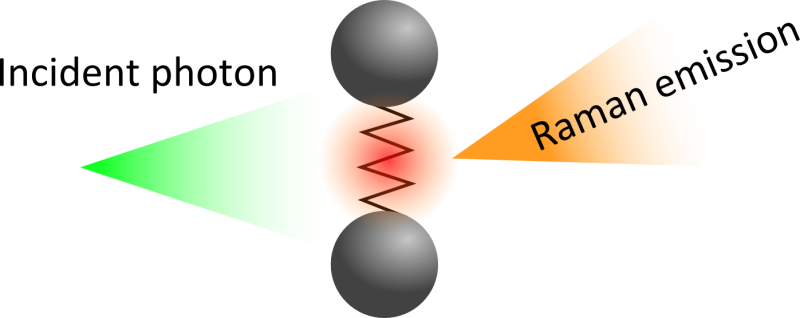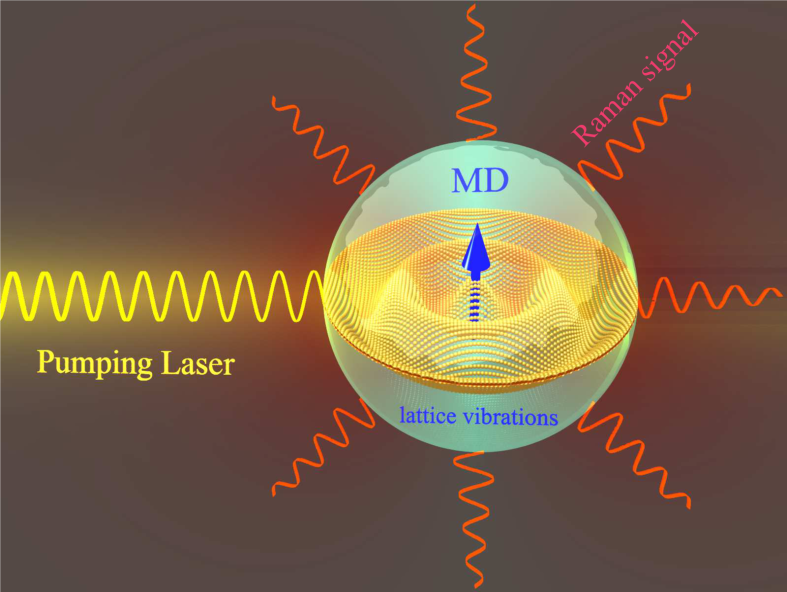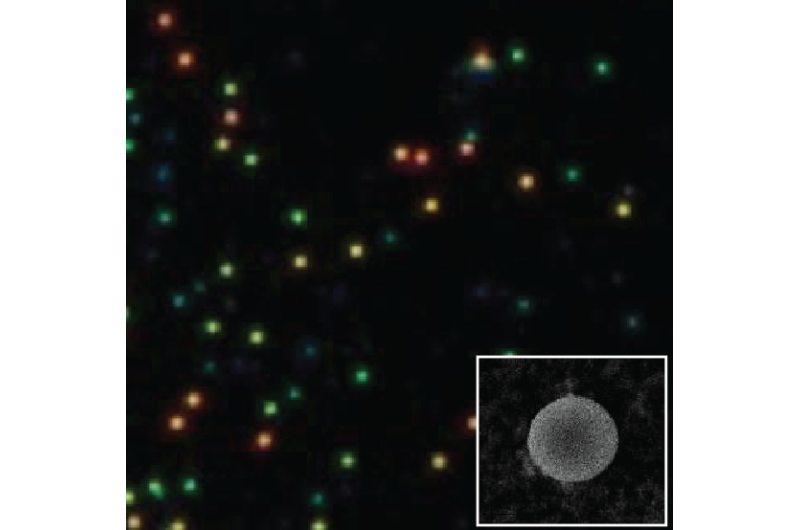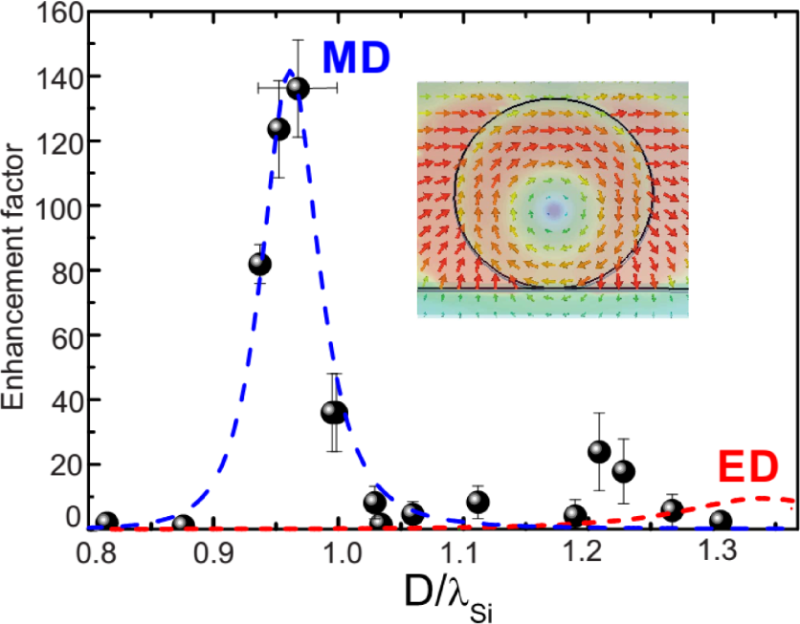Silicon nanoparticles pave the way toward nanoscale light emitters

Scientists from MIPT, ITMO University (St Petersburg), and their colleagues from the Australian National University have experimentally demonstrated that silicon nanoparticles can significantly increase the intensity of the Raman effect. These findings could contribute to the development of nanoscale light emitters and nanoscale amplifiers for fibre-optic telecommunications lines. The results of the study have been published in Nanoscale.
Usually, when light interacts with matter, it does not change colour, i.e., the wavelength of the light remains the same. There are exceptions, however, and one of them is the so-called Raman effect. In this case, incident light interacts with a molecule in such a way that the energy of the molecule increases by a value corresponding to the vibrational motion of the molecule. The molecule then re-emits a photon with lower energy and consequently a longer wavelength, meaning that the light becomes "redder." This process may also occur in bulk crystals.
The discovery of the Raman effect launched a whole new field of applied science—Raman spectroscopy. This method allows researchers to detect individual molecules of chemical substances. In addition, the Raman effect is widely used today in fibre-optic networks for signal amplification.
Until now, waveguides and spherical microcavities larger than the emission wavelength have been mainly employed for Raman effect enhancement. However, miniaturization of telecommunication devices requires the development of smaller optical components that consume less energy and are easier to "pack" on an electronic or optical chip.

The scientists, including Denis Baranov from MIPT sought to miniaturize Raman amplifiers.
The researchers used silicon nanospheres that support optical resonances—the so-called Mie resonances. They exist in any spherical particles and the wavelengths of these resonances depend on the particle size. One of the resonances that occurs for the largest wavelength is the magnetic dipole resonance—its wavelength is generally comparable to the diameter of the particle. In silicon, however, due to its large refractive index, magnetic dipole resonance is observed in the optical range (at wavelengths longer 300 nanometres) for nanoparticles with a diameter of approximately 100 nanometres.
This fact makes tiny silicon nanoparticles useful as miniature elements to enhance various optical phenomena, including spontaneous light emission, enhanced light absorption, and high harmonic generation.

In the experiment, the scientists studied the behaviour of silicon nanoparticles of different sizes. In order to determine the size of the particles, they placed them under a microscope and illuminated them with white light. Particles of different diameters demonstrate Mie resonances at different wavelengths resulting in different glowing colours in the dark-field image.
The scientists then tested how the intensity of the Raman emission depends on the diameter of a silicon particle. The intensity of the Raman emission was at a maximum at the resonant diameter of the particle, which was entirely consistent with the theory the authors had developed. The intensity of the Raman emission of resonant particles was more than 100 times greater than that of non-resonant particles with other diameters.
"The Raman effect is incredibly useful in practice, and will help not only in detecting microscopic amounts of chemical compounds, but also in transmitting information over long distances. Because of the pursuit of smaller electronic and optical devices, it is becoming increasingly important for us to look for nanostructures thatcan enhance this effect. Our observations have revealed a potential candidate—silicon nanoparticles," said Denis Baranov, a post-graduate student of MIPT and one of the authors of the paper.
Silicon nanoparticles could serve as a basis for the development of miniature optical amplifiers for fibre-optic networks. In the future, these particles could provide a platform for building a compact nanolaser using stimulated Raman scattering, which offers prospects for very interesting applications in medicine and biomicroscopy. In particular, detecting signals of the Raman emission from particles in the human body will allow specialists to track the movement of drug molecules.

More information: Pavel A. Dmitriev et al. Resonant Raman scattering from silicon nanoparticles enhanced by magnetic response, Nanoscale (2016). DOI: 10.1039/C5NR07965A
Journal information: Nanoscale
Provided by Moscow Institute of Physics and Technology



















